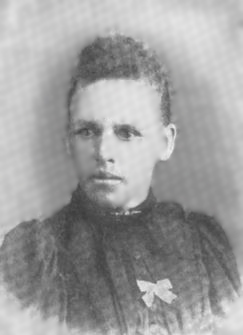Dinah Watts Pace facts for kids
Quick facts for kids
Dinah Watts Pace
|
|
|---|---|
 |
|
| Born |
Dinah P. Watts
January 9, 1853 |
| Died | January 25, 1933 (aged 80) |
| Education | Atlanta University, 1883 |
Dinah Watts Pace (1853–1933) was an American teacher who started schools for Black children in Covington, Georgia. She later founded the Covington Colored Children's Orphanage. She ran this orphanage for more than forty years. Dinah was born into slavery. She earned her teaching degree from Atlanta University. She became well-known across the country for her kind work helping orphans.
Early Life
Dinah P. Watts was born on January 9, 1853. She was born near Athens, Clarke County, Georgia. Her parents were Emily and Sterling Watts. They were enslaved by the Alexander family. By the time Dinah was eight, Mrs. Alexander was in charge of the household. She ran a boarding house with about twelve enslaved people. Dinah and her brothers and sisters tried their best to learn whenever they could.
After the Civil War ended, Dinah moved to Atlanta. She lived in the Summerhill neighborhood. This area was a lively center for the Black community. Even as a child, she helped start the Sunday school for the Pleasant Grove Baptist Church. This church is now known as the Paradise Missionary Baptist Church. After five years of attending Sunday schools, Dinah went to Atlanta University. She graduated in 1883.
A Life of Service
After finishing university in 1883, Dinah Watts went to Covington, Georgia. She planned to teach there for only a few months. But she saw how much the area needed schools. So, she started her own school and began teaching. In 1884, she took in two young orphans. Soon, more children who had no one to care for them followed.
That same year, she met James Pace. He was a local blacksmith and coffin maker. He was also a widower. James promised he would let her continue her important work. Then, they got married. In 1886, Dinah Pace stopped teaching at the school. She wanted to spend all her time raising money for her orphans. She traveled around the state to get funds.
Building the Orphanage
In 1890, Dinah officially created the Covington Colored Orphans Home. Its goal was to care for, educate, and train orphans or abandoned children. Her brother, Lewis Watts, was a big help. He worked as a Pullman porter, which meant he helped passengers on trains. He sent her parts of his pay to support her schools. He helped her pay rent for her house. He also helped her buy land to build her orphanage. He even helped build four buildings to house her 100 students.
A group of college women from Wellesley College (a "sorority") chose the orphanage as a project. They sent boxes of food and clothing. Dinah spoke at many events to raise money for her students. She even joined events with famous people like W.E.B. DuBois. Her work was often written about in Black newspapers across the country. Articles about the orphanage appeared in The Crisis magazine.
With $1000 from Sarah M. Reed, Dinah Pace began building the Reed Home and School. This was a large building with ten rooms. Eventually, Dinah hired three other graduates from Atlanta University. One of them was her niece, Anne Mae Watts. In 1916, someone from Boston gave money to build the Annie Woods Memorial Hall. This was a dormitory for boys. But the next year, the girls' dormitory was damaged by fire. Soon after the fire, James Pace, her husband, passed away.
Lasting Impact
Dinah Pace continued to run the school until she died. As she got older, it became harder to keep it going without her fundraising. Her niece, Annie Mae Watts, took over the school. She ran it for two more years after Dinah died. Then, the school closed. The county later removed the buildings from the property. Now, only a green space and a cemetery are left there. A special plaque at the Washington Street Community Center honors Dinah Pace. It recognizes how important she and her school were to Newton County history.
Dinah Pace died on January 25, 1933, in Atlanta. She was buried at South-View Cemetery in Atlanta. Her funeral was held at the Reed Street Baptist Church, which she had helped start. She became known as the "Mother of the Community." This was because of her work as a social activist and a leader. But her biggest legacy was the education she gave to more than 700 students who attended her school.

